Contrary to what most people think, Automated Optical Inspection is not a complex thing to understand. Instead, AOI provides a better understanding of complex issues.
For instance, the evolution of printed circuit boards is at the point where the circuits are small and more technical. Hence, it is more likely to produce many errors and technical faults.
Of course, we cannot solve such errors without implementing the AOI. That is why Automated Optical Inspection is needed to solve them.
AOI is a highly accurate inspection method for PCBs and PCB assemblies after the board passes through a soldering process.
Aside from solving complex errors, we can also use them to reduce possible errors.
So, what is AOI? How can it help you with various manufacturing needs? Let’s explore answers to these common questions through this guide.
Optical Inspection: What Is It?
Before we go ahead, we’d first have to understand what “Optical Inspection is.” Optical inspection has many things to do with the manufacturing and maintenance of optics.
Moreover, it involves checking and ensuring the quality of the optics. It includes inspecting the surface scratches of the optics. The inspection team can also review them based on the standard of the optics.
There are two ways to carry out the inspections. The first is a manual process carried out by personnel.
In this method, the inspector uses a lens magnifier. Optical microscopes can come in handy too. But, there is a downside to the manual process of inspection.
While inspecting the optics, you’ll need to move them around. Moving them around increases the chance of damage to the optics. So, it has a high probability of not detecting errors.
On the other hand, the second method includes using a machine. A machine does an accurate inspection process. This inspection process is both easier and faster, unlike the manual way.
Optical inspection is done at every stage of production till the final step.
What Is Automated Optical Inspection?
Automated Optical inspection (AOI) is a machine-based method used in PCB manufacturing. Companies use it to examine and authenticate optics, like curved, flat, coated, and optics. It is used in manufacturing because it is a non-contact test method.
AOI uses optics to capture images for detecting defects. It offers fast and accurate examinations to ensure product quality.
Moreover, it finds defects in printed circuit board assemblies (PCBAs). Thus, AOI plays a significant role in improving the product’s quality.
Furthermore, automated optical inspection works well in large production environments.
What Are the Applications of AOI?

The AOI setup consists of a workbench, electromechanical control, a camera system, and system software.
We can connect it to PCB assembly lines and bare board PCBs. Many process engineers prefer post-reflow AOI based on the kind of information you are looking for and how the inspection needs to be done.
During the inspection, the circuit board to be examined is positioned on the AOI machine’s workbench.
The X/Y workbench will forward the circuit board under the lens corresponding to the command of the set project. With the help of a unique light source, the lens will capture the image stipulated by the AOI system and perform analytical processing.
Thus, the processor will shift the X/Y workbench to the next appropriate position to receive and perform analytical processing on the next image.
We can achieve a greater inspection speed through repeated analytical processing of the image. The importance of AOI image processing is to digitize the captured images and then examine them with pre-stored standards.
After all the analysis process and final judgment, if the machine finds any fault, its position will be made ready.
The machine will also produce image characters for more evidence. Then, it will forward the circuit board back to the production section for necessary reworking.
Furthermore, some AOI can inspect the appearance of an object, identify barcode information, and design dimensions to produce yield rate, the number of defects, distributed defect type, and lots more.
Below is some information that we can obtain from the inspection results:
- Polarity
- Billboard
- Solder fillet
- Missing lead
- Body dimension
- Coplanarity
- Bridging
- Upside down
- Markings
Why Is AOI Needed?
AOI machines are developed to assess many details on printed circuit boards (PCBs) that the human eyes cannot capture. It also identifies and reports any defects to the operator.
Despite the current technological advancements, today’s circuits are more complex than how boards were some years ago. Then why is AOI needed?
AOI is needed because it has high-definition cameras and high-end lighting systems. The images captured are apparent due to an effective lightning system.
It’s developed with inbuilt software that compares required parameters, making it easier to find the smallest errors in the PCB. It uses distinct algorithms like pixel, inspection & counting and examines the image from various angles.
Moreover, due to increased complications of the board and ineffective manual inspection, automation inspection is required to make the project quicker and more accurate, thereby reducing too much load on the operator.
The inspection machine uses an integrated electronics test method to ensure cost efficiency. It assists in detecting errors early in production. It serves as the quickest and trustable method to examine and guarantee that the quality of the product is 100 percent original.
The inspection machine is beneficial because it ensures that process challenges are noticed early.
Furthermore, an AOI machine is needed because of its speed of inspection, inspection consistency, cost-effectiveness, flexibility, and lots more.
What Is the Role of AOI?
Automated optical inspection is a machine-based method used to test and inspect PCBs for potential faults. Also, it plays a vital role in PCB production. It ensures every board can serve the expected high performance needed in complex electrical applications.
AOI is crucial in checking and inspecting the printed circuit board after assembly. Its focus is on product quality in the production line with minimum cost. It detects faults in PCB, identifies places where the actual board separates from the ideal design and flags it for reworking.
AOI offers the following benefits for PCB production:
Ensuring Quality
AOI guarantees that your PCB products perform well as intended. It ensures that quality products are provided, thus promoting customer satisfaction and gaining a high reputation in the business.
Evaluating a Complex Board
AOI inspects and evaluates complex boards. It checks circuits and examines intricate board designs with a degree of accuracy that the human eyes cannot capture.
Improving Processes
Let’s say AOI detects an error from faulty processes. Then, AOI can further assist you in identifying patterns of defects and adjusting your processes before you produce many boards with the same faults.
Identifying and detecting errors at the early stage helps to reduce the chance of future rework and enables efficient production operations.
Customizability
AOI is highly customizable. You can adjust it by setting the parameters to instruct the scanner what to inspect for in the PCB. It’s also easy to edit or adjust your settings to catch flaws if your design specifications change.
What Are the Advantages and Disadvantages of AOI?
Advantages
Positional Accuracy
The positional accuracy of the production unit and inspection machine is essential. Even a tiny deviation in position can lead to many defects.
The AOI machine offers higher accuracy. It can detect minor positional deviations.
Low Cost
AOI provides a rapid and repeatable inspection at a cheap cost. It is fast to install with the help of online training and an installation guide, which are helpful to the program.
AOI tests can help improve the PCB’s pass rate. So it can reduce the final cost of the PCB.
Multiple Inspection Object
Inspections always fall in every manufacturing activity before any product can be considered good working and sold out.
But can you perform just a single inspection activity in PCB manufacturing? Of course, no! You will need more than one inspection process in line.
Multiple inspections play an essential role in PCB manufacturing. It helps you check and inspect surface scratches and other issues.
You can carry out a manual inspection in different ways, either with microscopes, comparators, and magnifiers. Using these tools requires shifting the optics around, increasing the chances of damaging the optics.
Thus, the AOI machine plays a significant role in the inspection. That’s because it’s easier and faster than traditional inspection.
Programmable Lighting
Lighting must achieve the expected results in machine vision applications. The electronics field grows with each passing day. Thus, it is hard to discover a single light source that can catch all defect conditions.
AOI tests can help in this scenario. These tests can configure light arrays within its inspection software.
Besides, the AOI machine can increase image contraction to detect different defect conditions.
Network-Capable Software
AOI has the best network-capable software tools to help companies lead to zero-defect production. And it provides solutions that can tackle any form of inspection on PCBs.
Data collection and retrieval is an essential task of any AOI system.
The AOI machine can collect data in different formats. It can be an image collection, a text output, or a combination of other formats.
Data collection is a common task. But what makes an AOI system more reliable is its ability to retrieve data. Retrieving data is often more complex than it appears. It also depends on the configuration of the production line.
Good Flexibility
You can carry out AOI tests at any production stage. That’s because the AOI system is highly flexible.
It is often better to perform AOI tests after reflow soldering. That’s because major defects occur after soldering.
Disadvantages
Unseen Solder Joints
These are the source of many ‘gremlins’ within electronics. Many times, AOI machines fail to catch circuit errors. It can leave solder joints unseen.
Misjudgment
Most of the AOI machines are slow in detecting defects. The AOI machines that use scanning mechanisms are fast at detecting defects.
However, the chances of misjudgment are higher. It can occur due to different light colors, parts covered by other components, or solder joints surrounded by elements.
AOI can detect only those places where the light can reach directly.
Fixtures Are Difficult to Update and Expensive
Most AOI software cannot figure out intricate problems. Thus, they will not be able to provide solutions to the problem.
It becomes challenging to get a revised version when it comes to updating AOI systems.
The AOI system is complicated to update or operate, and it’s very much expensive, too.
Test Access Becomes More Difficult
AOI only catches defects with difficult-to-classify failure modes, such as glue or seal defects. Defect detection capabilities are not flexible and must be programmed accordingly.
What Is The Working Principle Of An AOI Machine?
Illumination
AOI machine illuminates an object using a light source. The light covers it from multiple angles and in different colors to get a three-dimensional image.
You will notice the use of infrared, ultraviolet, incandescent, and fluorescent lights in old AOI machines. Nowadays, the latest AOI machines use LED lights to create illumination. Moreover, using LED lights helps create illumination in different colors like blue, white, red, and green.
Besides lighting type, the light source’s position also plays a crucial role. Its position must be correct enough to highlight all imperfections.
Machine Vision Camera
Each AOI machine comes with a provision to capture the product’s image. Then, it sends the image for analysis.
Some AOI machines feature more than one high-definition camera to deliver excellent performance. Moreover, these cameras can work according to commands given by the software.
The imaging resolution of the AOI machine plays an essential role. It determines how much detail it can spot and capture.
The resolution also defines the inspection speed and accuracy of the AOI machine.
Thus, the AOI machine must use high-quality machine vision lenses and cameras.
Industrial AOI Lenses
As stated earlier, a lighting source illuminates the board and its components. After that, lenses carry out the main task.
The aoi lens helps capture the board’s image in the form of light. Then, the image sensor transforms it into a separate digital image. This digital image goes to the processing unit for further analysis and inspection.
Therefore, it won’t be wrong if we say that the whole work of an AOI machine depends on industrial aoi lenses. Without good quality industrial aoi lenses, no further steps can be carried out.
You can find various types of machine vision and industrial lenses on our Products page.
Processing Software
Everything depends on the AOI machine’s program. Before the AOI machine inspects any product, there must be appropriate product information already installed in the system.
Manual programming and algorithm-based programming are two common ways to program the software of an AOI machine.
How Does AOI Lenses Help Find Defects?
Defects in Soldering
Insufficient Solder
Insufficient solder usually comes up on the joint, resulting in an open circuit. It happens when the solder paste clogs at the apertures of the stencil and even if the solder volume is high.
Sometimes a solder cannot connect all the components. We call it solder skips.
It can affect the board’s performance. That’s because an insufficient solder cannot create a stable electrical connection.
Also, the board can face missing parts if there is too little solder. Little soldering cannot hold the components on PCB.
An AOI machine can help in such situations. It can scan and identify the solder amount on each PCB component.
It also compares the current board with a correct image. Thus, it tells you if the board is faulty and needs resoldering.
Excess Solder
In the soldering process, using small or excess solder is very risky. It can lead to short circuits and many other problems.
Remember, if the excess solder falls on the pin, it doesn’t ensure the connection of the components. It usually creates solder balls on the board. It means the joint remains lose and causes most problems.
Of course, it is easy to catch solder balls because of their size. However, the chances of missing these balls are high in manual inspections.
So, an AOI machine can quickly scan the board and detect the solder balls. It also marks the board as faulty and sends it for reworking.
Open Circuits
Open solder joint usually comes up when there’s an open connection between the lead and the pad. It usually happens when there’s a broken or no connection between the pad and the solder.
It may also happen when the solder is only on PCB but not the component lead.
There are traditional ways to identify prominent open circuits. A simple x-ray imaging or even a visual inspection can do it. However, some open circuits are hard to detect.
An AOI machine scans the board to identify even slightly open circuits. It can flag the board as faulty and send it back for correct circuit closing.
Solder Shorts
Solder bridges or shorts are common issues in PCB. It happens when the solder connects two or more PCB components that shouldn’t have any electrical connection.
Solder shorts occur due to too much soldering during board production. Sometimes, solder goes into an incorrect place that needs to be solder-free.
Solder bridges are challenging to catch with the human eye. An AOI machine can help scan the board to detect even the tiniest solder bridges. After that, it sends defective boards back for reworking.
Defect in Component
Misplaced or Misaligned Component
Misalignment or misplacement often happens to boards in many ways, affecting the board’s performance.
It can happen during production when an operator places the components incorrectly. Sometimes, components move away from their place after placement.
An AOI machine can scan the board for such defects.
Lifted Lead
A lifted lead is a common issue when the PCB’s small metal pads fail to stick correctly. It occurs due to improper handling during production. Sometimes, excessive heat can also lead to lifted lead issues.
It can lead to component failure and even affect the board’s performance. Thus, it is essential to scan the board for lifted leads using an AOI machine.
Missing Component
The missing component is also a common defect in PCBs. As stated above, inadequate soldering can result in missing components.
Although the human eye can detect missing parts, it is a serious issue. Employing a reliable AOI machine to scan for missing parts can help prevent PCB’s catastrophic failure.
What Is the Difference Between AOI Machine and Manual Human Inspection?
When we talk about Automated Optical Inspection, the definition will not be complete if the role of Optical Inspection in the industry is not defined.
AOI machine and manual inspection are two different methods. They carry out the same task but in different ways.
The differences between AOI machines and Manual Inspection are apparent. Some of them are listed below:
Efficiency
The inspection takes place either by an individual, recognized as a manual inspection or by an optical inspection machine.
The manual inspection uses tools like optical comparators, single-lens magnifiers, and microscopes.
As we all know, human eyes are prone to exhaustion and need intervals and rest after a few hours of the inspection. Moreover, each staff member can inspect only one product at a time. Thus, it also brings the production efficiency down.
Remember, PCB production occurs on a large scale. So, handling large volumes and examining tiny boards via manual inspection is impossible.
AOI Machines can check several products in one inspection cycle and do not need rests. They can be programmed and regulated as per demands and also operate 24 hours a day.
It helps companies fulfill PCB production needs. Moreover, the possibility of errors also decreases due to increased inspection speed.
Consistency
Human beings cannot keep consistency for long when tiredness kicks in. And this will influence the efficiency of the inspection method. Human inspectors are not competent enough to work for an extended period.
An inspector’s capacity to catch errors reduces within 15 minutes of the job’s commencement.
However, AOI machines have high stability throughout the inspection process. They can maintain the same standards until the final product is inspected.
Thus, it helps keep inspection consistency throughout the process. It also ensures no product goes unchecked.
Cost
Manual inspection incurs significant labor expenses as many inspectors work simultaneously. Moreover, training and managing the staff can also add a considerable amount to the total costs.
Research proves that a machine can replace almost five human inspectors, saving considerable time and money.
The initial cost of the AOI machine might sound like a significant investment. But it also offers returns in terms of time and money savings, accuracy, and efficiency.
Documentation
The manual inspection involves hand-written documentation, so they are liable for errors. Hand-written document databases are hard to maintain. It is challenging to keep and analyze the documents at every stage of the production process.
AOI machines provide printed documents in the desired catalog arrangement at every stage of the production process.
Thus, it becomes simple to analyze the mistakes. It also assists in sustaining the quality of the product. So, make sure you invest in an AOI machine to avoid complaints or rejection from buyers.
What Are the Design Guidelines for AOI Testing?
As explained earlier, AOI is a profitable approach for examining printed circuit boards and PCB assemblies once they have finished a soldering cycle.
AOI is competent in discovering flaws, soldering issues, and other problems.
The way how AOI systems may operate depends on several guidelines. It depends on how the camera views the PCB. So, the actual success rate of an AOI machine depends on the industrial lenses.
We must emphasize the role of machine vision lenses and their resolution.
There should be an accurate image processing program to handle images and catch any defects. For better image processing, the machine must first create a precise image of the board.
And it is possible with only high-quality lenses, such as Bi-Telecentric Lenses and Ultra Resolution Bi-Telecentric Lenses.
The points illustrated below are some guidelines for increasing the AOI machine’s performance:
All Areas of the Board Should Be Visible and Accessible
In some PCB assemblies, elevated solder or big components may affect sectors of the board and make them less visible. Thus, confirm all areas and components are observable for the AOI system. You can take the necessary steps during the PCB design.
The Component Sizes Should Be Consistent
PCB designers often specify standard sizes for some components, such as capacitors, diodes, and resistors. But note that their actual dimensions may differ. Thus, make sure you use these components of the exact sizes. It will help the AOI machine to run smoothly.
The Component Pads Should Be Standard
The AOI processor often creates a profile for joints. So, make sure the board has standard component pads.
Avoid Using Overlapping Pads
Sometimes, it sounds suitable to combine two component pads. But overlapping pads often lead to troubles. It can specify a different joint profile and provide wrong information about the defect.
Frequently Asked Questions(FAQs)
When Should You Implement Automated Optical Inspection?
AOI is beneficial in several production processes, especially PCBA inspection. It may not be a suitable option for low-volume production or product development.
It works best for pre-reflow and post-reflow, solder paste inspection, and bare board inspection.
In short, you can treat AOI as a monitoring tool. It is not an issue-solving or process-improvement solution.
How to Implement AOI?
You will need a technical setup, well-trained staff, and programming to implement AOI. Each PCB component that undergoes inspection will require programming. Thus, each board can take several hours of programming.
You may need to update the program in case of product revision.
How Much Does AOI Cost?
The automated optical inspection setup involves various costs. It depends on the collective price of software, hardware, and custom changes required in the machine. The cost of standard AOI solutions can start at around $30-35k.
Final Thoughts!
We hope you now understand the AOI machine and its work mechanism.
We all know the importance of tests and inspections during production. Of course, technological evolution has been involving machines at every production stage. It improves work efficiency while lowering operating costs.
The AOI machine uses high-quality cameras to scan and detect significant defects in PCBAs. It has high-quality machine vision lenses with good resolution. These lenses are essential to capture even the tiniest of errors. It helps detect quality failures and catastrophic failures.
Thus, AOI machines are far better than traditional manual inspection processes. It is a non-contact test method that offers the real-time pass/fails analysis of PCBs.


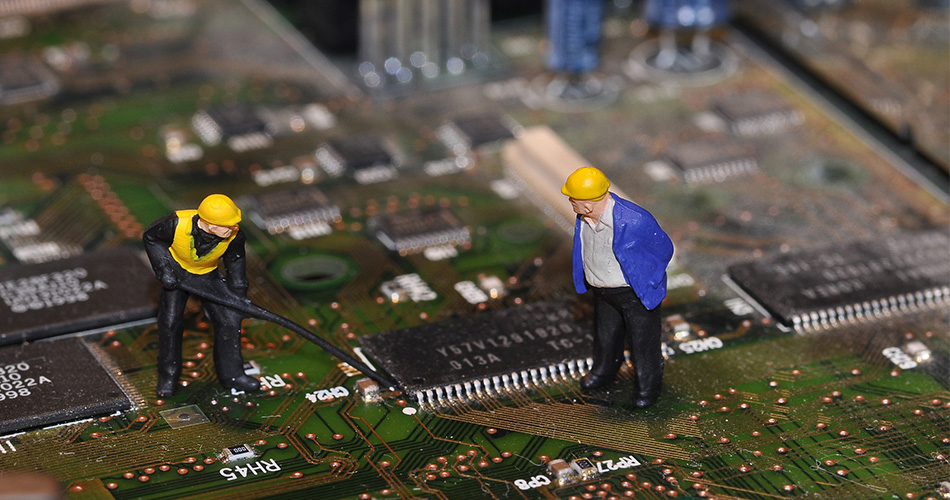
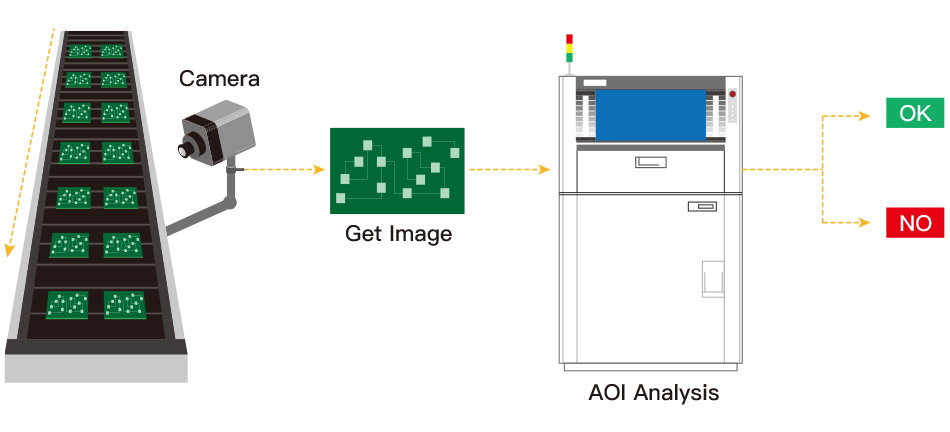
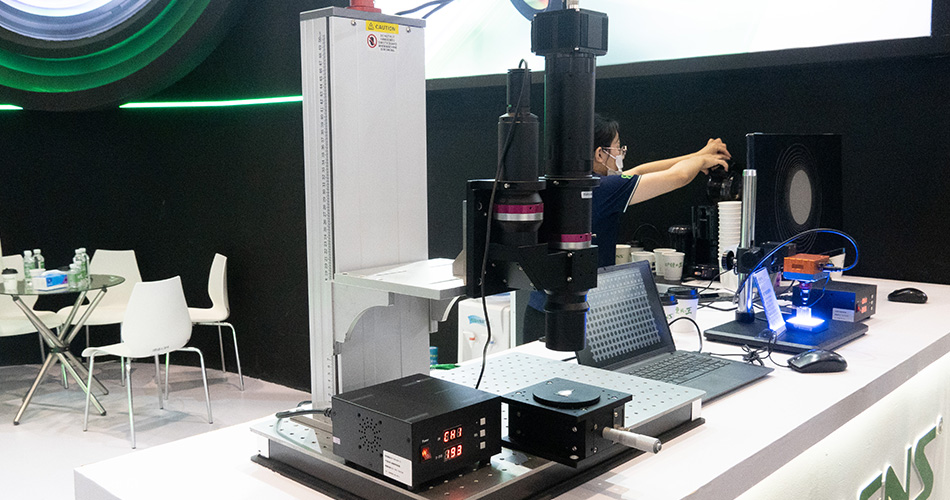
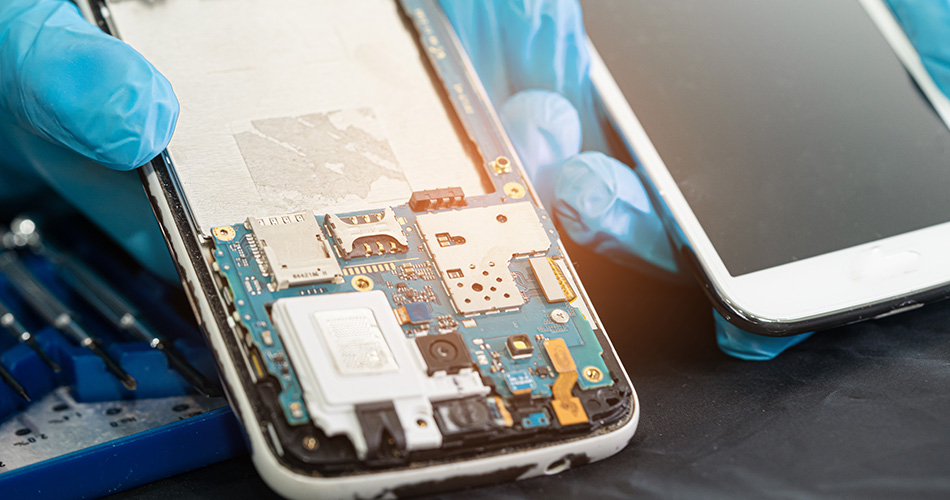
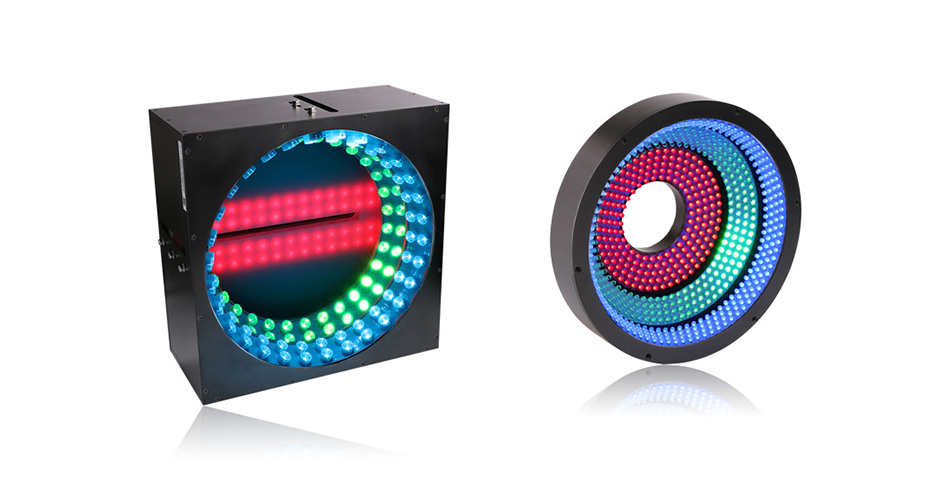
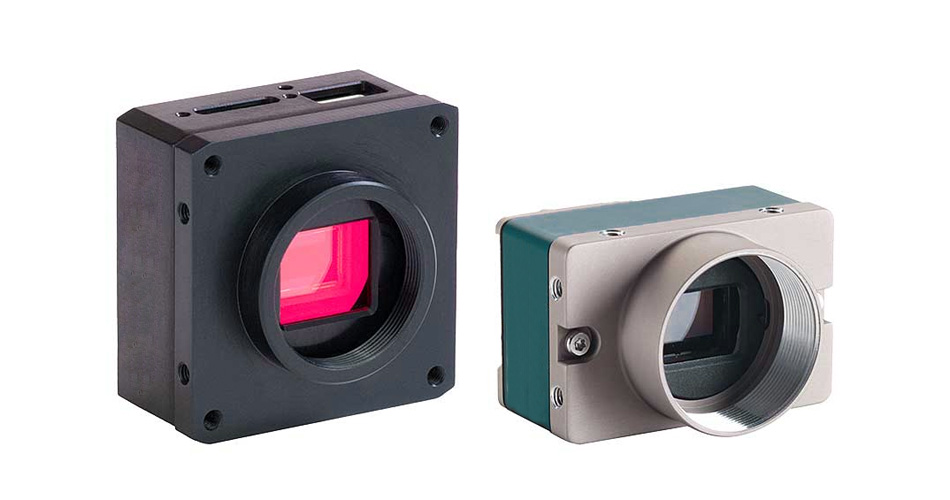
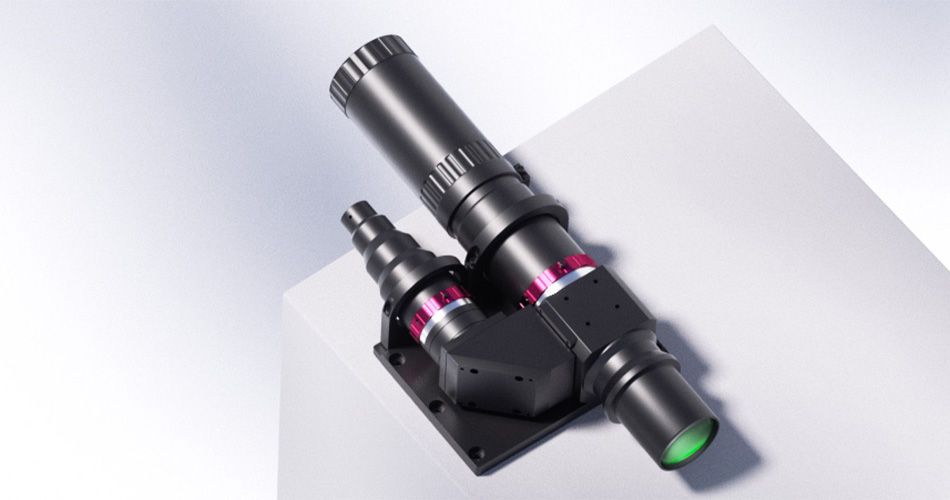
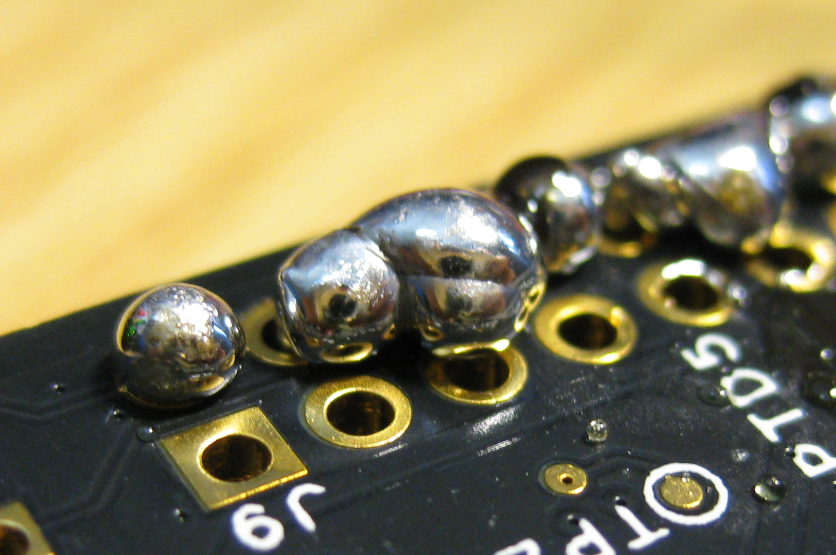
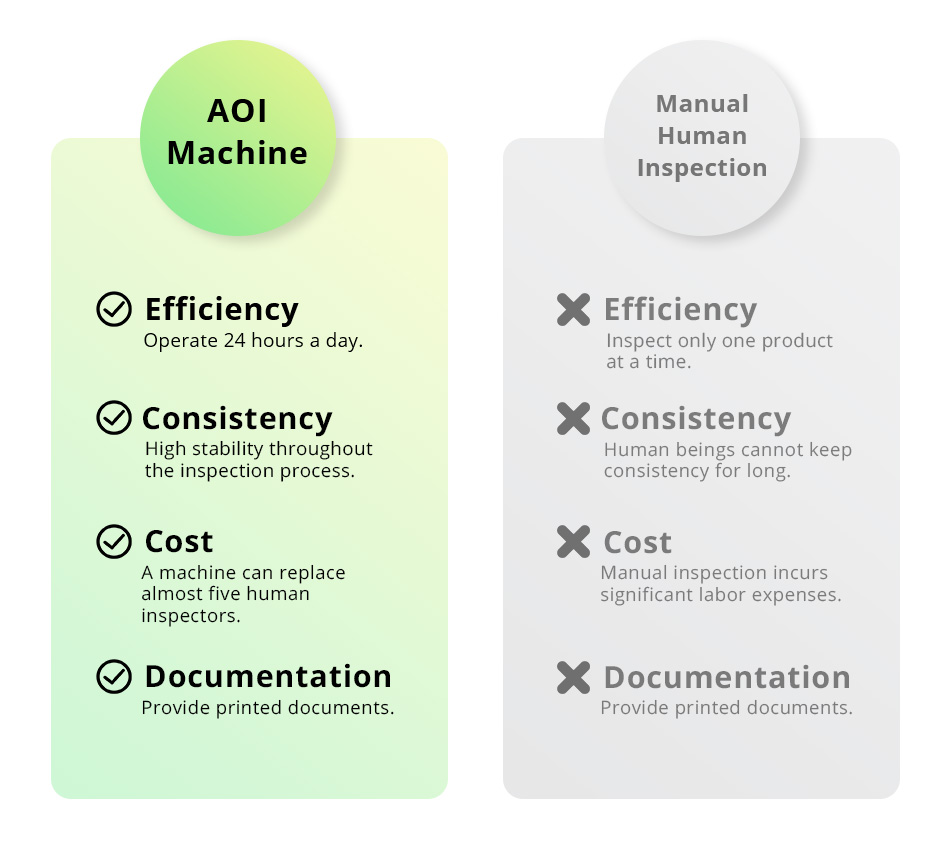


3 thoughts on “A Definitive Guide to Automated Optical Inspection (AOI) in 2024”
Truly a very insightful piece from which I learned quite a lot on AOI. Thank you!
Hi David,
Thanks for sharing this guideline tutorial! I’m starting to work on a AOI related project. I may contact you for some consultation if you don’t mind
hi Jack,
Thanks for your kind feedback and interesing, that is really very important for us.
We’re very pleased to offer any assistance for your AOI project.
You can email to sales@vicoimaging.com or fannie@vicoimaging.com for quick communication.